You can use indoor plants to beautify your desk at the office and workplace. These plants help in reducing stress, sickness, and absences of colleagues. Moreover, office plants increase the productivity and creativity of all workers. Plants make their food using carbon dioxide and water in the presence of light or sunlight. During this process, plants release oxygen human beings use for breathing. In the 1980s, NASA scientists proved plants remove chemicals (benzene, trichloroethylene, and formaldehyde) from the air. Moreover, in addition to purifying the air, these plants also reduce noise levels. Here are 7 low-maintenance office plants that can beautify your desk.
{ 1 } Easy To Grow Gerber Daisy Plants
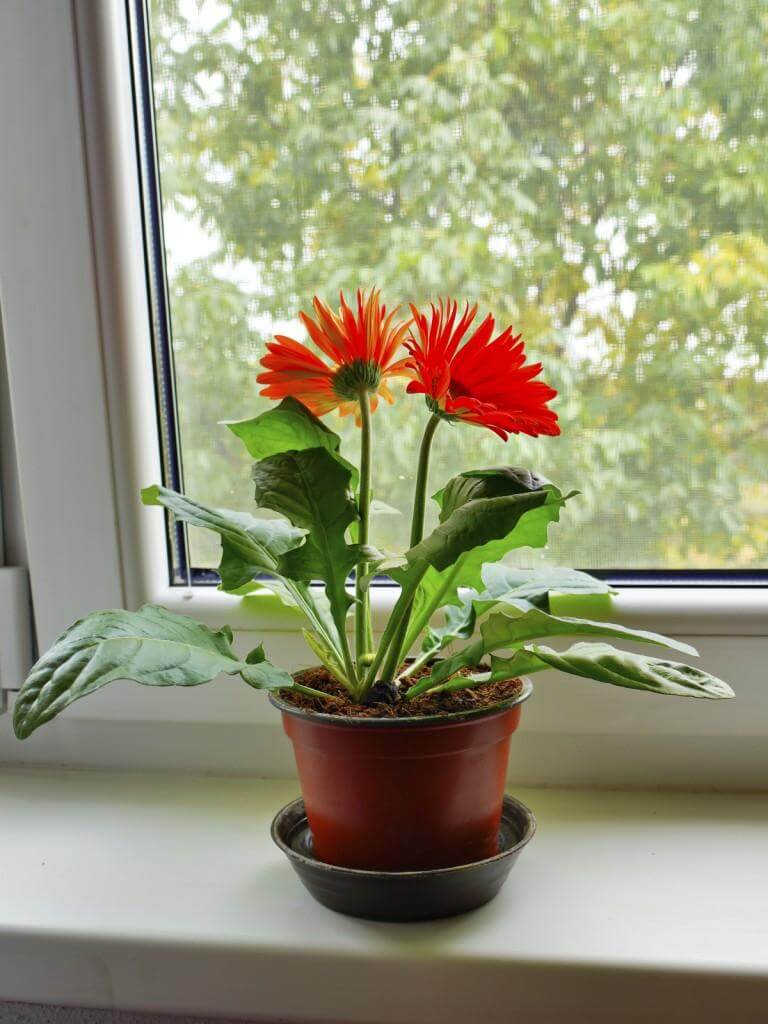
Gerber or Transvaal daisies are seasonal plants having short stems and green foliage. These produce brightly colored long-lasting blooms and make excellent gifts. Taking proper care allows the plant to survive for 2-3 years. Gerber requires bright light and moderate temperature. The plant can stand in the morning sun but, get scorched leaves in the afternoon sun. Gerber plants like cool temperatures and cannot survive in temperatures above 70º F/21º C. Adequately water the Gerber plant taking care not to wet the leaves. Add regular fertilizer in spring and summer. Remove the bloom to stimulate more blooms. As and when required, remove the dead leaves.
{ 2 } Philodendrons For Office Plants
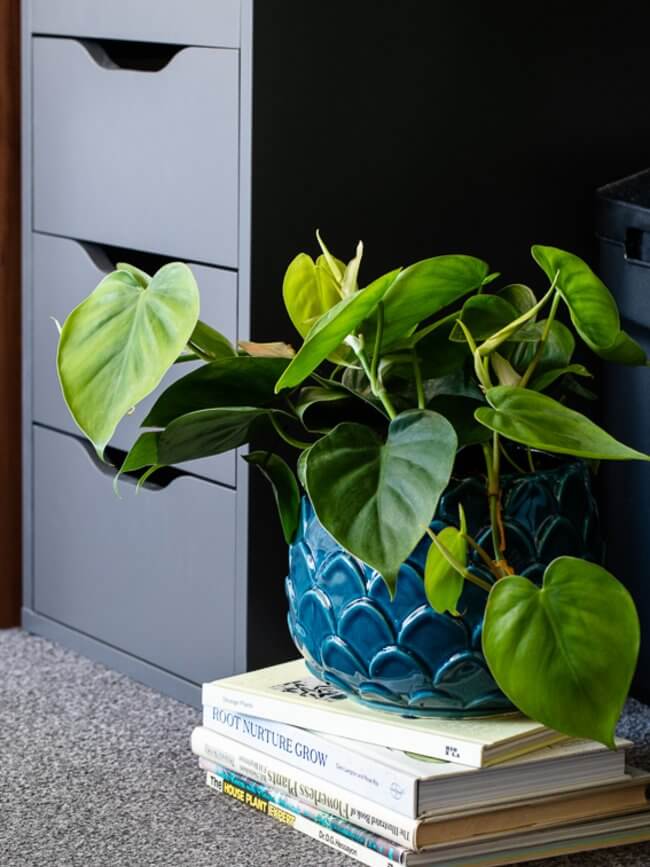
Caring for Philodendron is very easy taking hints from what the plants need. These plants adapt to the office atmosphere. You can grow Philodendron office plants all year around. Philodendron plants require indirect light, water and fertilizer to survive. You can remove the old yellow leaves. You can propagate a new plant from a 6” cut stem with several leaves. Philodendron plants grow in well-drained soil. Adequately water the plant only when top soil feels dry to touch. Use macro-nutrient based fertilizer soluble in water. Add this every 4 weeks in spring and summer and every 6-8 weeks in fall and winter.
{ 3 } Weeping Fig Plant For Office
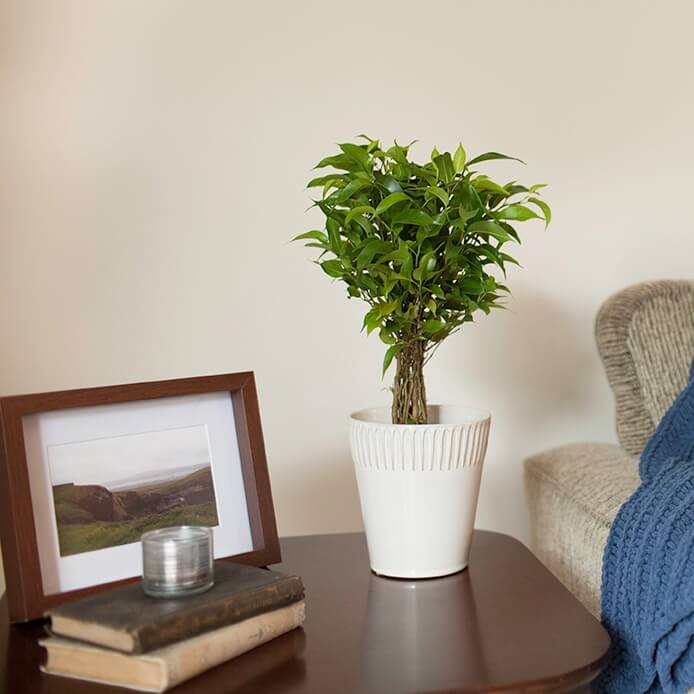
Weeping Fig or Ficus plants come from Southern Asia but grow as office plants. These plants have glossy dark leaves that fall when growing conditions are unfavorable. The thin branches arch and grow away from the light grey colored trunk. Weeping Fig removes toxins (formaldehyde, benzene, and trichloroethylene) from the air. Place the plant in a bright spot. Try not to constantly change its position or else it would shed all its leaves. Use well-drained potting soil mixed with sand, perlite, and vermiculite. Adequately water the plant and keep it moist. Too much water would cause the roots to rot and the leaves to shed. Weeping Fig plant likes night temperature (65 – 70º F) and daytime temperature (75 -85 º F). This plant likes high humidity so keep a humidifier in the room. You have to add lots of fertilizer, rich in magnesium and manganese, throughout its growing season.
{ 4 } Cactus on Office Desk

Cactus In A Pot On The Work Table By Oleksandr Berezko/Shutterstock
Cactus as an office plant is ideal since it does not need too much light and frequent watering. There are several varieties to select from that grows in the tropics, and other climates. You can decorate your office desk with a spiny desert cactus. These succulent plants thrive in direct sunlight in the winter. The cacti plant needs watering every 2-3 weeks when the soil is absolutely dry to touch. You have to place the plant at a very bright spot.
{ 5 } ZZ Plant Thrives In Office
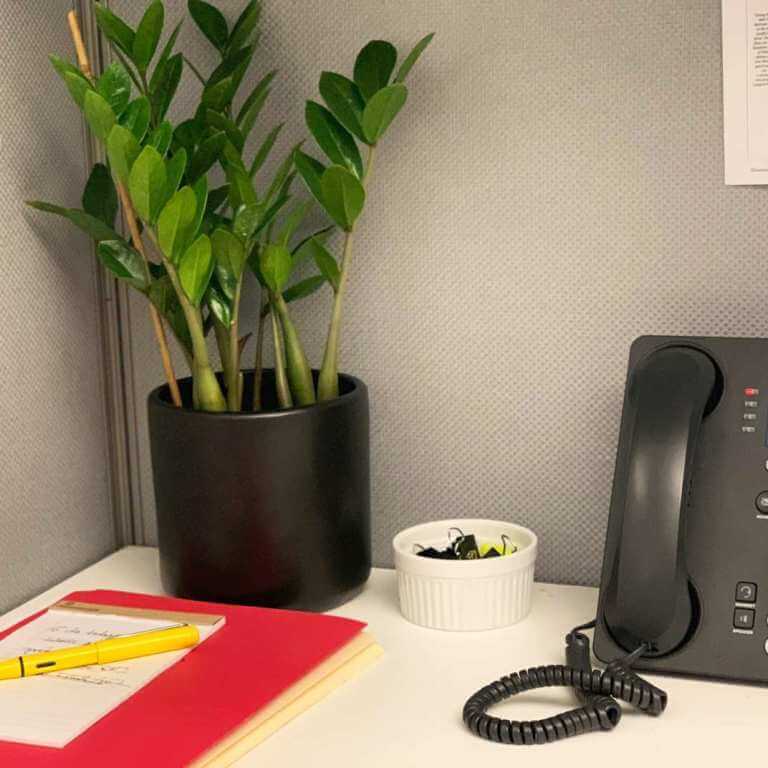
ZZ or Zamioculcas zamiifolia originally comes from Africa and it was distributed by Dutch in 1996. The plant has wide, dark waxy green leaves that reflect sunlight and brightens the room. It is a very tolerant plant thriving in drought and shady areas. The ZZ plant grows very slowly and reaches a height and width of 2-3 feet. This plant does not require any special potting soil. You can add liquid fertilizer once a month. According to NASA, ZZ plants remove toxins (xylene, toluene, and benzene) from the air. To avoid getting skin rashes, wear gloves and wash hands after tending ZZ plant. Earlier, it was rumored to cause cancer but, studies prove otherwise.
{ 6 } Office Desk With Aloe Vera

Office Desk With Laptop and Aloe Vera In A Pot By Ann Tramell/Shutterstock
Aloe Vera plant is an attractive succulent medicinal plant for decorating your office. The green leaves are thick and fleshy growing out from the central stem. The margins of the leaves are serrated with small teeth. The gel from Aloe Vera leaves can be used topically for healing burns and skin rashes. Consuming the gel in large quantities is harmful causing nausea/indigestion in pets and human beings. Use a terra-cotta or porous pot. Fill it with well-drained soil mixed with perlite, sand and lava rock.
Although Aloe Vera plants are hardy, these can die from rotting of roots. Fill 1/3 of the plant pot with well-drained potting mixture and place the Aloe Vera plant in the soil. Continue filling the pot with mixed soil around the Aloe Vera plant. Leave a ¾ inch of space between the top of the soil and rim of the pot. The bottom leaves should rest right above the soil. After potting, do not water the plant for at least a week. This would prevent the roots from rotting.
{ 7 } Pothos Plant Growing In Office
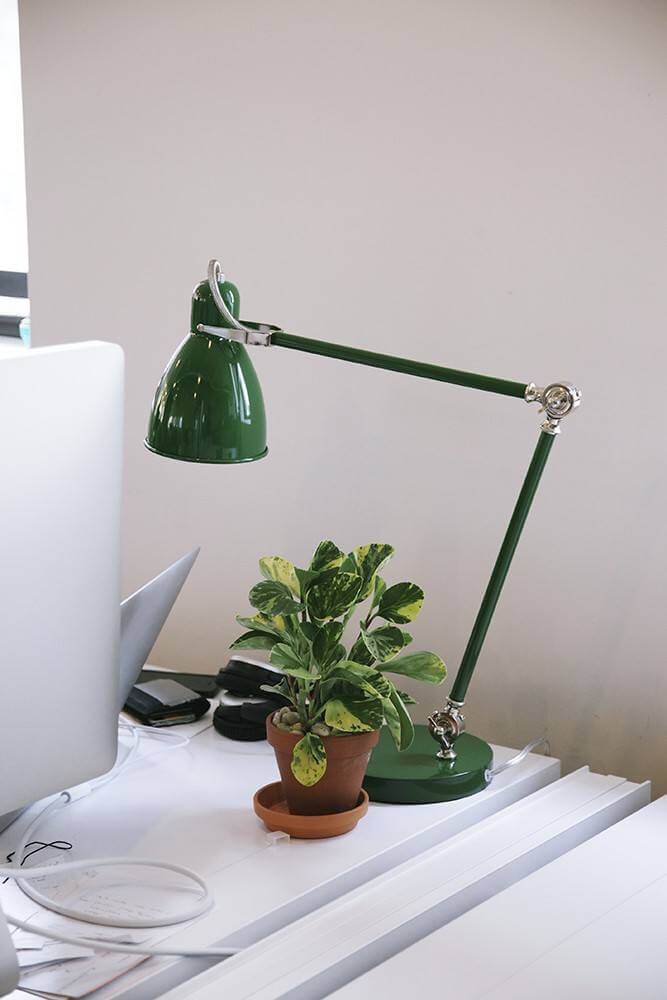
Pothos or Epipremnum aureum is known as “Devil’s Ivy” because these are hardy. Pothos come from the tropical forest and grow indoors in colder climates. These plants trail, climb and grow as vines indoors. Pothos plants have heart-shaped green leaves and thrive in low lights and humidity without much care. Pothos remove toxins (formaldehyde, benzene and carbon monoxide) from the air. These plants release oxygen while making their own food from carbon dioxide and water in the presence of light.
Grow Pothos in bright but not direct light. These Pothos plants prefer growing in soil that gets completely dry before re-watering. Take care not to over water the Pothos plants. Watering the soil makes it so soggy that the roots of these Pothos plants rot. On noticing the leaves droop, you should understand that the plant needs water. Pothos plants have to be fed with a suitable fertilizer for indoor plants on a monthly basis.





